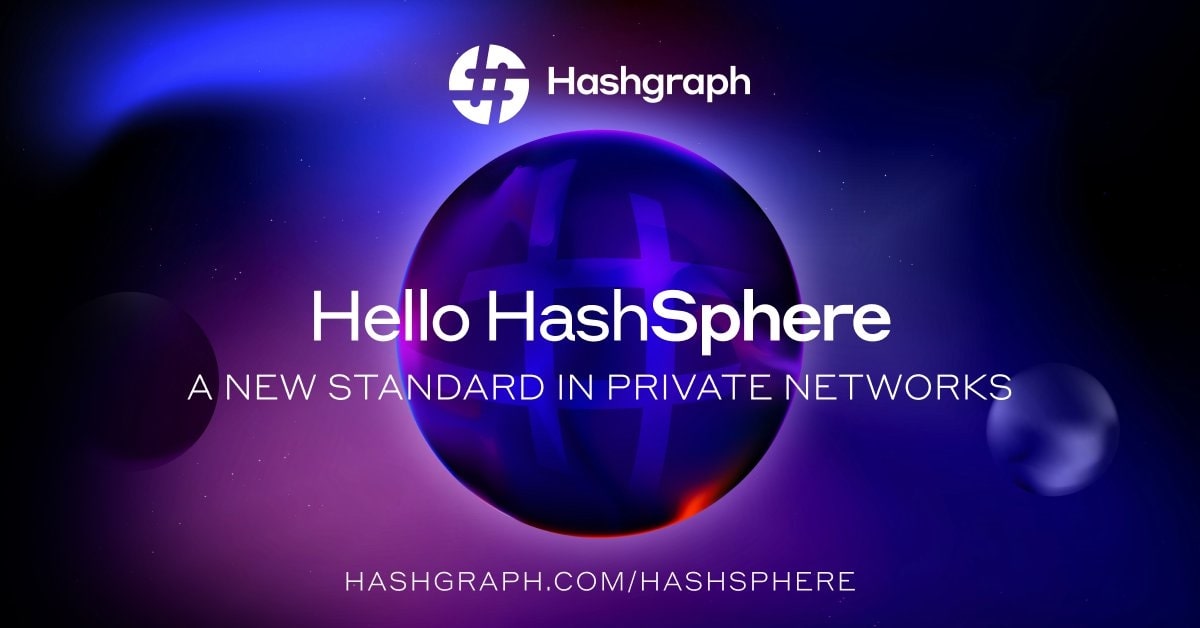Hashgraph Announces HashSphere: Permissioned Blockchain for Compliant Finance

Key Takeaways:
- In Q3 2025, Hashgraph is introducing HashSphere, a private and permissioned blockchain.
- HashSphere targets regulated businesses, including banks and asset managers, that prioritize compliance and privacy.
- The platform also offers EVM compatibility and interoperability with the public Hedera network.
Hashgraph, the company behind the Hedera network, has revealed plans to launch HashSphere, a private, permissioned version of its network. Expected to launch in Q3 2025, HashSphere is designed and built for enterprises that operate in heavily regulated industries.
Built for Regulated Finance: Stablecoins and EVM Compatibility
HashSphere aims to enable affordable, compliant cross-border stablecoin payments for banks and asset managers. The platform is currently in beta testing and is already being tested by major industry players due to the extensive legacy systems that Hedera has integrated into, such as Australia Payments Plus – an operator of key Australian payment infrastructures and a long-term member of the Hedera Governing Council.
HashSphere will support Ethereum Virtual Machine (EVM) compatibility. The compatibility enables institutions familiar with the Ethereum ecosystem to build and implement smart contracts easily on the next-generation platform. Central to this is compliance with strict regulatory requirements such as Know Your Customer (KYC) and Anti-Money Laundering (AML) regulations.
HashSphere: Addressing Enterprise Blockchain Adoption Hurdles
Ethereum’s public network lacks key compliance and security features, slowing enterprise adoption.

HashSphere will create a controlled environment to address this issue. Through permissioned access, enterprises can operate with greater confidence, knowing that only verified participants can engage with their network. By restricting access and transaction participation to verified entities, HashSphere enhances data protection, security, and regulatory compliance. Andrew Stakiwicz, head of solutions at Hashgraph, said HashSphere is intended to break down large barriers to blockchain in the enterprise. In particular, concerns around vendor lock-in, scalability, and the security risks of public networks that use anonymous validators have hampered adoption. HashSphere’s trust model (using only well-known parties) provides a higher security and control.
The need for institutions to repeatedly conduct KYC and compliance checks, tasks already completed internally for their clients, poses a challenge with permissionless chains. Institutions also require increased privacy and control over their on-chain operations. By implementing granular access controls and customizable privacy settings, HashSphere provides institutions with the ability to tailor blockchain functionality to their unique regulatory and business needs. This is where HashSphere comes into play.
Essential Attributes: Focus on Stablecoins and Interoperability
HashSphere’s planned interoperability with Hedera’s public ledger is a standout feature. This hybrid approach enables businesses to take advantage of the security and compliance benefits of a private, permissioned environment, while still benefitting from the efficiency gains, potential cost savings, and broader ecosystem access made possible through a public DLT.
HashSphere prioritizes privacy, compliance, and interoperability for institutions. It facilitates seamless and secure asset transfers such as stablecoins between the permissioned private HashSphere stack, with the public Hedera network and potentially with other Layer 1 protocols.
The growing adoption of stablecoins aligns well with HashSphere’s focus on regulatory compliance. Already, Hedera has created solutions to enable seamless onboarding of stablecoins. Existing momentum in this area includes plans by several Filipino banks to launch a stablecoin called PHPX on the Hedera network later this year.
HashSphere Enters the Competitive Permissioned DLT Arena
The introduction of HashSphere marks a return to Hashgraph’s original focus on permissioned ledgers. The company, formerly Swirlds Labs, initially focused on permissioned ledgers, working with organizations like the credit union startup CULedger in 2018. While early solutions faced deployment challenges due to limited compatibility, HashSphere resolves this by integrating Ethereum-compatible smart contracts, making it significantly more open.
With its launch, HashSphere aims to compete with established permissioned DLTs. Discussions on compliance, privacy, and control resonate with firms hesitant about fully public chains. Although specifics are yet to be finalized, we can speculate on HashSphere’s potential competitiveness. Hyperledger Besu currently enjoys traction due to its pathway for integration with the Ethereum mainnet. HashSphere, leveraging its EVM compatibility, positions itself as a strong contender in the competitive permissioned DLT space. Moreover, if HashSphere inherits Hedera performance benefits, these could translate into significant speed and scalability benefits compared to Besu. It will use all of the core Hedera features including its consensus mechanism , its token service, and the EVM-compatible smart contract service.
More News: Injective Joins Blockchain Association to Help Amplify Crypto Advocacy
The post Hashgraph Announces HashSphere: Permissioned Blockchain for Compliant Finance appeared first on CryptoNinjas.





